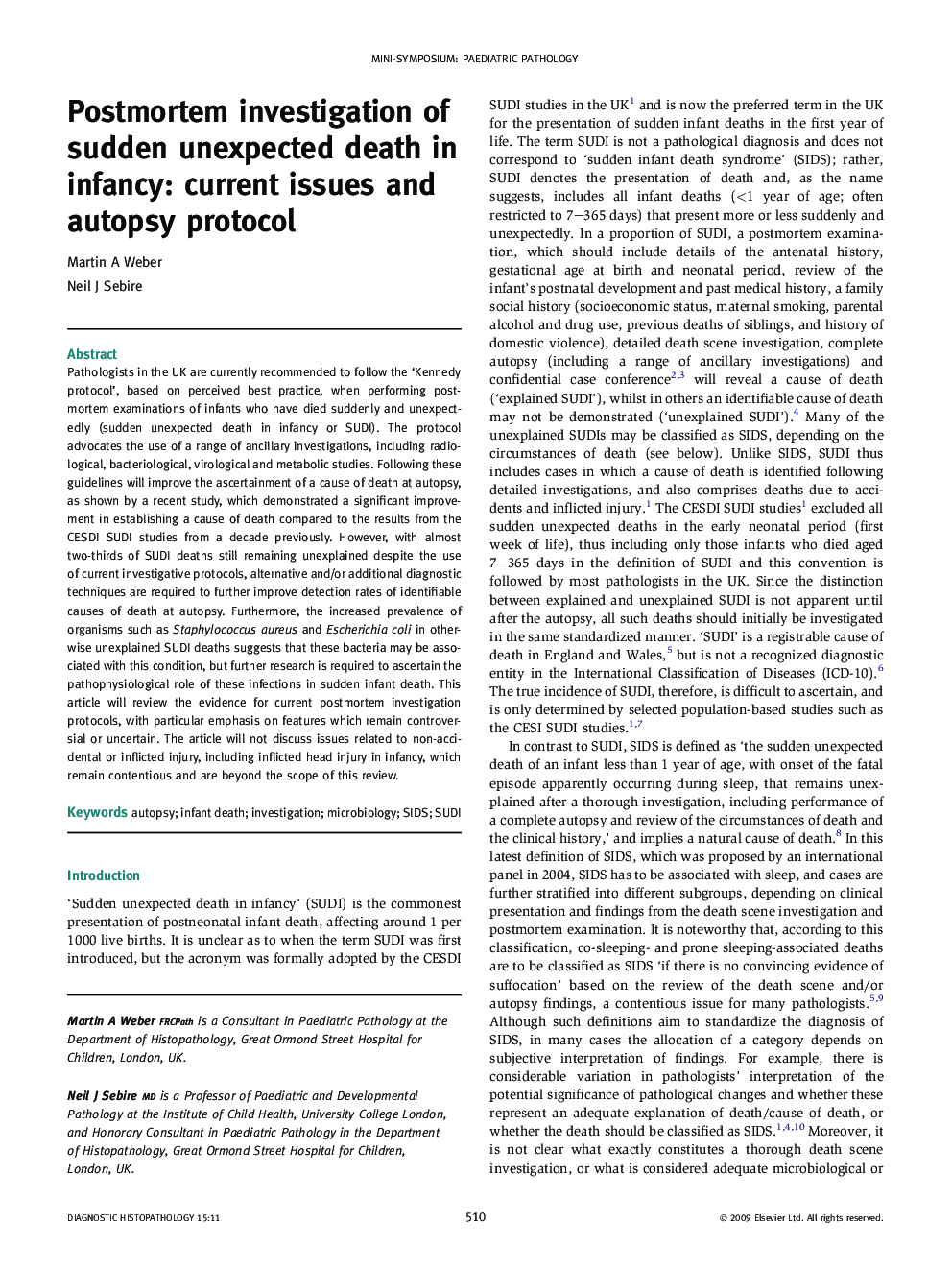| Article ID | Journal | Published Year | Pages | File Type |
|---|---|---|---|---|
| 4131694 | Diagnostic Histopathology | 2009 | 14 Pages |
Pathologists in the UK are currently recommended to follow the ‘Kennedy protocol’, based on perceived best practice, when performing postmortem examinations of infants who have died suddenly and unexpectedly (sudden unexpected death in infancy or SUDI). The protocol advocates the use of a range of ancillary investigations, including radiological, bacteriological, virological and metabolic studies. Following these guidelines will improve the ascertainment of a cause of death at autopsy, as shown by a recent study, which demonstrated a significant improvement in establishing a cause of death compared to the results from the CESDI SUDI studies from a decade previously. However, with almost two-thirds of SUDI deaths still remaining unexplained despite the use of current investigative protocols, alternative and/or additional diagnostic techniques are required to further improve detection rates of identifiable causes of death at autopsy. Furthermore, the increased prevalence of organisms such as Staphylococcus aureus and Escherichia coli in otherwise unexplained SUDI deaths suggests that these bacteria may be associated with this condition, but further research is required to ascertain the pathophysiological role of these infections in sudden infant death. This article will review the evidence for current postmortem investigation protocols, with particular emphasis on features which remain controversial or uncertain. The article will not discuss issues related to non-accidental or inflicted injury, including inflicted head injury in infancy, which remain contentious and are beyond the scope of this review.
